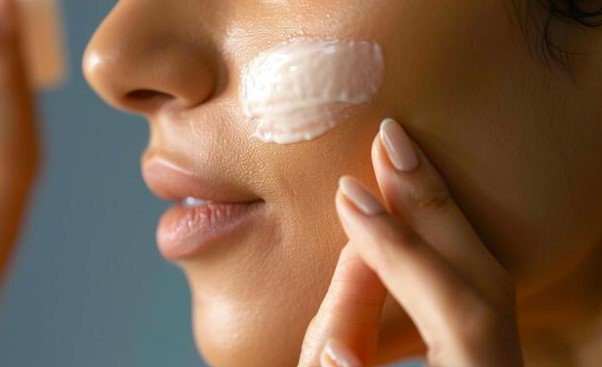Skin-Friendly Alternatives for PPE-Related Skincare Concerns
Summary
- Using gentle, Natural skincare products can help prevent irritation and breakouts when wearing PPE for extended periods of time.
- Ingredients like aloe vera, chamomile, and calendula have soothing properties that can calm irritated skin.
- Regular cleansing, moisturizing, and protecting the skin are essential steps in a proper skincare routine, especially when dealing with PPE-related skin issues.
Skin-Friendly Alternatives for PPE-Related Skincare Concerns
Gentle cleansers
When wearing PPE for long hours, sweat, oil, and bacteria can build up on the skin, leading to breakouts and irritation. Using a gentle cleanser that is free of harsh chemicals and fragrances can help keep the skin clean without stripping it of its natural oils. Look for cleansers that contain soothing ingredients like aloe vera, chamomile, or calendula to help calm inflammation and redness.
Moisturizing Creams
Wearing PPE can cause the skin to become dry and irritated, especially in areas where the mask or goggles rub against the skin. Using a rich moisturizing cream can help hydrate and nourish the skin, creating a barrier to protect against irritation. Choose a cream that is non-comedogenic and free of heavy oils to prevent clogged pores and breakouts.
Protective Balms
In areas where the skin is constantly in contact with PPE, such as the bridge of the nose or behind the ears, using a protective balm can help soothe and prevent irritation. Look for balms that contain ingredients like shea butter, coconut oil, or beeswax to moisturize and protect the skin. Apply a thin layer before putting on PPE to create a barrier between the skin and the protective gear.
Facial Serums
Incorporating a facial serum into your skincare routine can provide an extra boost of hydration and nourishment, especially when dealing with PPE-related skin issues. Look for serums that contain ingredients like hyaluronic acid, vitamin C, or niacinamide to brighten the skin, reduce inflammation, and promote healing. Apply a few drops before moisturizing to lock in moisture and improve skin health.
Soothing Masks
Using a soothing mask once or twice a week can help replenish and rejuvenate the skin, especially after long hours of wearing PPE. Look for masks that contain natural ingredients like green tea, cucumber, or oatmeal to soothe and hydrate the skin. Apply a thick layer and leave on for 15-20 minutes before rinsing off to reveal a fresh, glowing complexion.
Sunscreen
Even when wearing PPE, it is important to protect the skin from the harmful effects of UV rays. Choose a lightweight, non-greasy sunscreen with at least SPF 30 to shield the skin from sun damage. Apply sunscreen generously to all exposed areas of the skin before putting on PPE, and reapply every 2 hours for maximum protection.
Hydrating Mists
Throughout the day, when wearing PPE, the skin can become dehydrated and dull. Using a hydrating mist can help revitalize the skin and provide instant moisture. Look for mists that contain ingredients like rose water, Witch hazel, or glycerin to hydrate and tone the skin. Spritz on the face whenever needed to refresh and rejuvenate the skin.
Lifestyle Changes
In addition to using skin-friendly products, making some simple lifestyle changes can also help prevent irritation and breakouts when wearing PPE. Drink plenty of water to stay hydrated, eat a Balanced diet rich in fruits and vegetables, get enough sleep to allow the skin to repair itself, and practice stress-relieving activities like meditation or yoga to maintain overall skin health.
By incorporating these skin-friendly alternatives into your skincare routine and making some lifestyle adjustments, you can effectively prevent irritation and breakouts when wearing PPE for extended periods of time. Remember to listen to your skin's needs and adjust your routine as needed to maintain a healthy and glowing complexion.

Disclaimer: The content provided on this blog is for informational purposes only, reflecting the personal opinions and insights of the author(s) on the topics. The information provided should not be used for diagnosing or treating a health problem or disease, and those seeking personal medical advice should consult with a licensed physician. Always seek the advice of your doctor or other qualified health provider regarding a medical condition. Never disregard professional medical advice or delay in seeking it because of something you have read on this website. If you think you may have a medical emergency, call 911 or go to the nearest emergency room immediately. No physician-patient relationship is created by this web site or its use. No contributors to this web site make any representations, express or implied, with respect to the information provided herein or to its use. While we strive to share accurate and up-to-date information, we cannot guarantee the completeness, reliability, or accuracy of the content. The blog may also include links to external websites and resources for the convenience of our readers. Please note that linking to other sites does not imply endorsement of their content, practices, or services by us. Readers should use their discretion and judgment while exploring any external links and resources mentioned on this blog. Content in this blog is copyright protected, please do not repost or embed content without prior written permission.